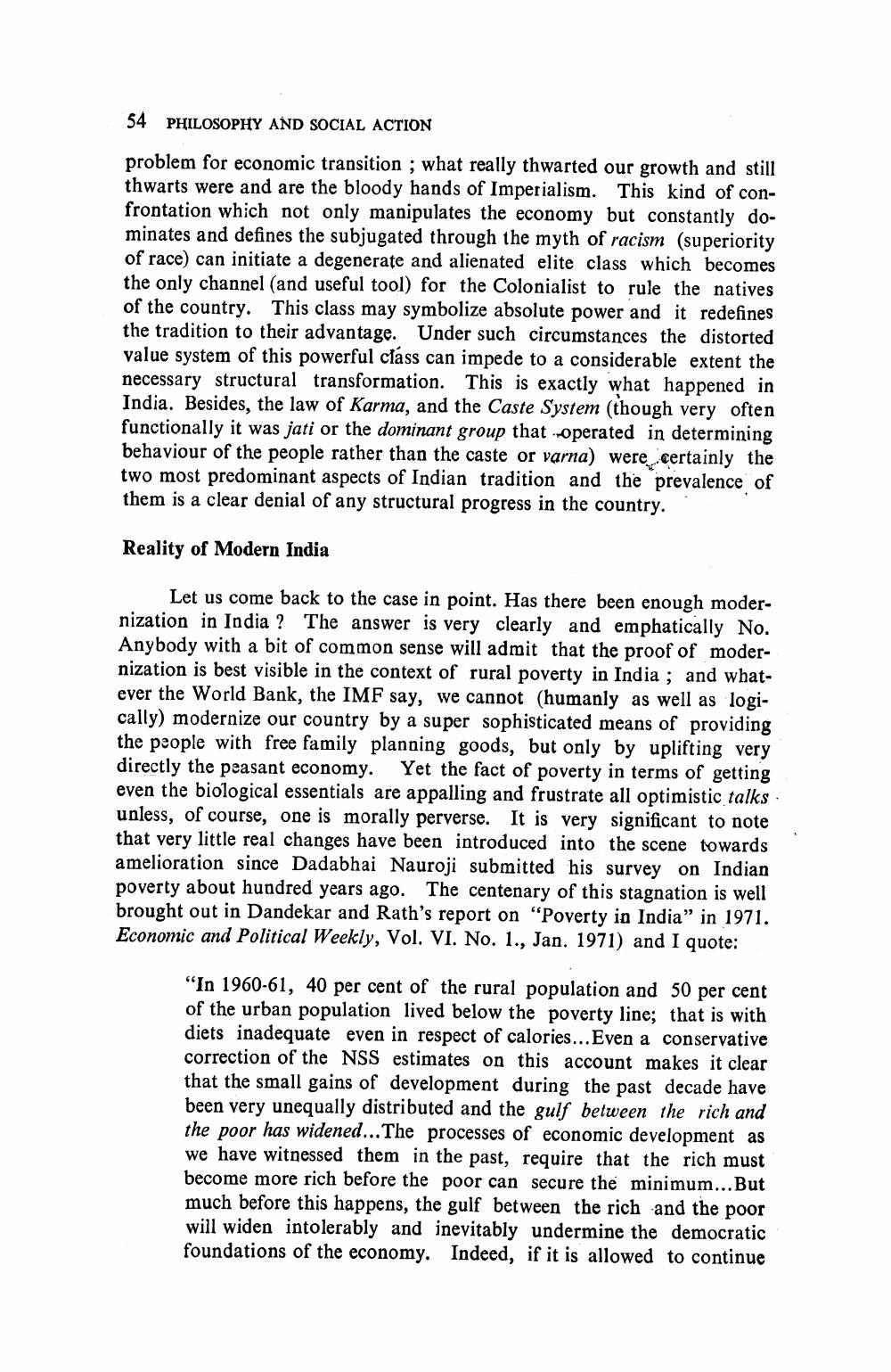________________
54 PHILOSOPHY AND SOCIAL ACTION
problem for economic transition ; what really thwarted our growth and still thwarts were and are the bloody hands of Imperialism. This kind of confrontation which not only manipulates the economy but constantly dominates and defines the subjugated through the myth of racism (superiority of race) can initiate a degenerate and alienated elite class which becomes the only channel (and useful tool) for the Colonialist to rule the natives of the country. This class may symbolize absolute power and it redefines the tradition to their advantage. Under such circumstances the distorted value system of this powerful class can impede to a considerable extent the necessary structural transformation. This is exactly what happened in India. Besides, the law of Karma, and the Caste System (though very often functionally it was jati or the dominant group that operated in determining behaviour of the people rather than the caste or varna) were certainly the two most predominant aspects of Indian tradition and the prevalence of them is a clear denial of any structural progress in the country.
Reality of Modern India
Let us come back to the case in point. Has there been enough modernization in India ? The answer is very clearly and emphatically No. Anybody with a bit of common sense will admit that the proof of modernization is best visible in the context of rural poverty in India ; and whatever the World Bank, the IMF say, we cannot (humanly as well as logically) modernize our country by a super sophisticated means of providing the people with free family planning goods, but only by uplifting very directly the peasant economy. Yet the fact of poverty in terms of getting even the biological essentials are appalling and frustrate all optimistic talks unless, of course, one is morally perverse. It is very significant to note that very little real changes have been introduced into the scene towards amelioration since Dadabhai Nauroji submitted his survey on Indian poverty about hundred years ago. The centenary of this stagnation is well brought out in Dandekar and Rath's report on "Poverty in India" in 1971. Economic and Political Weekly, Vol. VI. No. 1., Jan. 1971) and I quote:
"In 1960-61, 40 per cent of the rural population and 50 per cent of the urban population lived below the poverty line; that is with diets inadequate even in respect of calories... Even a conservative correction of the NSS estimates on this account makes it clear that the small gains of development during the past decade have been very unequally distributed and the gulf between the rich and the poor has widened... The processes of economic development as we have witnessed them in the past, require that the rich must become more rich before the poor can secure the minimum...But much before this happens, the gulf between the rich and the poor will widen intolerably and inevitably undermine the democratic foundations of the economy. Indeed, if it is allowed to continue




